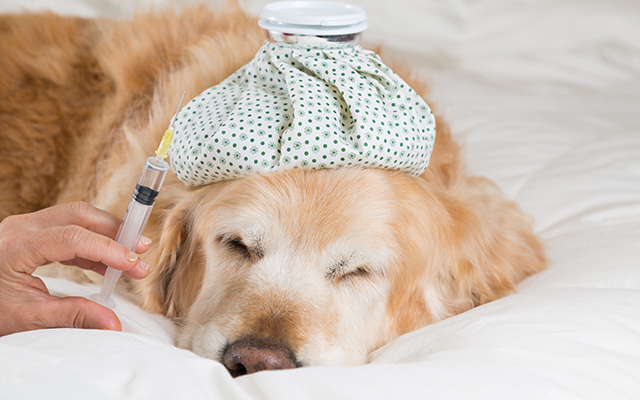Parvovirus is a contagious virus that basically affects dogs, even though this virus was first perceived to have originated from cats.
This acute dog disease was first noticed in the 1970s and was commonly described as an attack on the cells in the dog’s body, particularly those rapidly producing cells. It is also commonly regarded to take place in the gastrointestinal tract’s lining. As highly contagious as parvovirus is, you as a pet owner should know the common symptoms associated with the virus.
Symptoms at the beginning of the infection
Like diseases in human beings, the spread of the parvovirus disease in the dog’s body has an identified incubation period of four to five days. Once it manifests on your pet, you can see signs like vomiting and diarrhea. There are dogs that may catch a fever because of the virus while others may not indicate such symptoms. Depression may also be a commonly noted symptom at the beginning of an infection. Since diarrhea comes with the virus, expect dehydration in your dogs too. Diarrhea, at its worse, can also be accompanied by bleeding or blood in the stools.
Some common symptoms in the past are already considered rare at present
Apart from the ones enumerated above, it can be noted that heart muscle involvement, specifically in neonatal puppies, was common back then. Now, this manifestation is identified as a rare incidence since two to four-week-old puppies are already given the vaccination to gain better protection from viruses and diseases. These immunizations allow for a better boost of the maternal antibodies.
The manifestations of parvovirus as bodily changes
You can also see a sudden change in how your dog looks when parvovirus attacks it. These bodily changes include sudden weakness and an abrupt weight loss. The loss of weight happens because of excessive vomiting and diarrhea. While you may consider this as a normal result of the other two common symptoms, you may also consider it as a sign that your dog is already infected by this highly contagious disease.
Dehydration and the symptoms that come with it
As mentioned earlier, dehydration results from the dog’s diarrhea and vomiting. Dehydration can be easily detected by looking at the dog’s skin. You will notice that it becomes dry and that it stays tented even when it is pinched. Normally, when the dog’s skin is pinched, it will go back to its usual position seconds after pinching it. Together with skin tenting, the mouth also becomes dry and the eyes sunken. All these are common signs that indicate dehydration.
A pungent smell of stool
Apart from the ones mentioned above, there are other common symptoms of parvovirus infestation in dogs. In most cases, the stool of an infected dog will give off a pungent odor.
You should be vigilant enough when you have seen all or some of these symptoms in your dog. Do not wait for another day or two. Never put your dog’s life at stake by delaying a trip to an animal clinic. It is always best to ask for the help of veterinarians when it comes to canine parvovirus. Pay a visit right at that time when you have seen any of the above-mentioned symptoms so as to give your dog the highest chance of combating this nasty virus.


